Are you wondering how to treat thrush in horses? Here are the 10 most effective methods for treating thrush in horse’s hooves.
Let’s start by answering the question: What is thrush?
Thrush in a horse’s hoof is a fungal infection of your horse’s hoof or hooves. There is often a stinky, rotten smell when you pick out your horse’s feet. The hooves may be dark in appearance and/or be white and flakey. Thrush can cause pain and lameness if left untreated.
This is why you need to prevent and treat thrush as soon as you are aware of what it is.
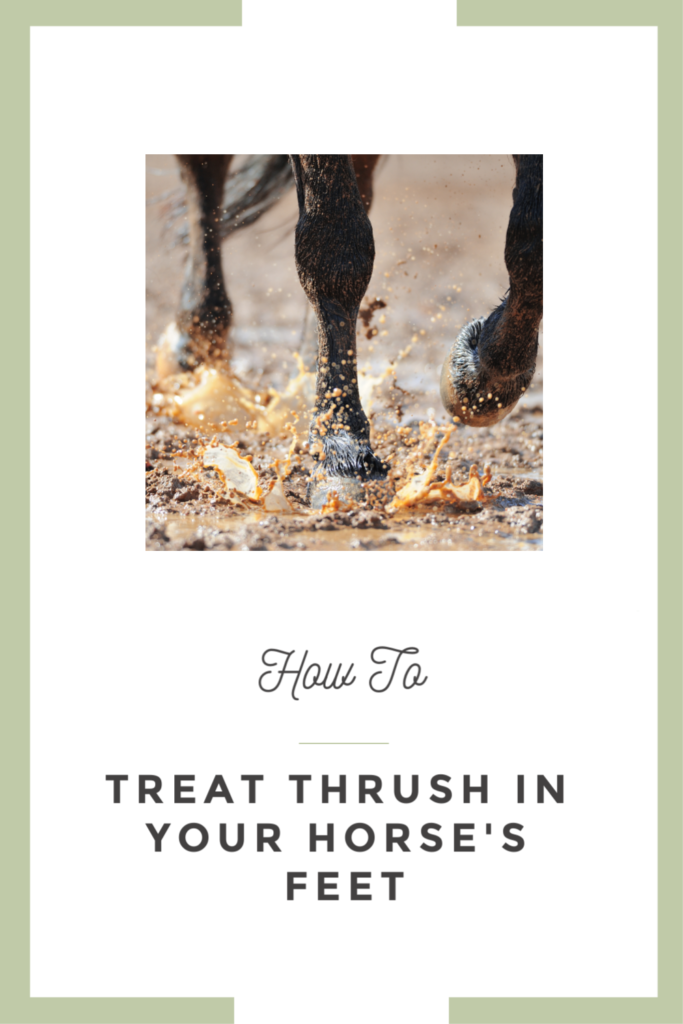

Perhaps you’ve tried to treat thrush in horses before but it just doesn’t go away? Thankfully there are many treatments available so if something hasn’t worked for you before, there are options for something new to try.
It seems as though most farriers and veterinarians agree that thrush is most commonly found when horses are kept in wet and/or dirty conditions. Movement and clean conditions can help prevent (and treat) thrush in your horse. Keep this in mind when trying to get rid of thrush.
Please note that this post is not a substitute for your vet or farrier’s advice. Be sure to ask them which treatment is right for your horse.
No Thrush is different than the other treatments on the list because it is a dry formula. This is a new concept in thrush treatment. This is a powder that is applied after cleaning the hoof thoroughly.
This product contains – All Natural proprietary mix of multiple clays and silicates, salts of copper, iron, oregano powder, and diatomaceous earth.
Thrush buster is a purple liquid that is applied after cleaning the hoof. (If you might spill it, you will spill it, and it stains!) It comes in a 2oz bottle, which sounds small. However, you only use it once a week or once every two weeks depending on the purpose of application, so it will last a while.
This product contains – Water, Isopropanal, Formalin, P.V.P. Iodine Complex, Gentian Violet.
Related Post: 11 Boredom Breakers for your Horse
Pete’s Goo:
This one comes from Pete Ramey (he is a well-known hoof expert just in case you don’t know what I am talking about). He has changed up the goo mixture over the years, but currently he suggests mixing 8oz/250ml of generic Desitin with two teaspoons/10ml of copper sulfate powder. You mix this up and load up a monojet syringe (plastic tip) to get it deep into the hoof’s crevices.
This “goo” contains: Desitin and Copper sulfate powder. Check out Pete Ramey’s website for more information.
This is a green liquid, used for the treatment of thrush. The bigger bottle can be difficult to maneuver without spilling, so go for the smaller one at first.
Ingredients: Copper Naphthenate 37.5% w/w, Inert Ingredients 62.5% w/w
Treating thrush in horses with apple cider vinegar is one of the most cost effective methods on this list.
Apple cider vinegar has quickly become a household staple for most people so using it to treat thrush in horses so access to ACV is simple and treating thrush with apple cider vinegar is very easy.
Mix Apple Cider Vinegar with water and put it into a spray bottle. Opinions vary on straight apple cider vinegar versus mixing with water so you can be the judge of what mixture you want to put on your horse. Clean the hoof well and spray the apple cider vinegar onto the now clean hoof.
Ingredients – Apple Cider Vinegar and Water
Hoof clay is smeared and packed into the crevices of your horse’s foot. It feels like a molding clay and sticks well if the hoof is cleaned before application.
Ingredients – Active Ingredients: Iodine, Tea Tree Oil, Yucca Extract. Inactive ingredients – silicon dioxide, grain extract.
White Lightning is a soaking treatment that you do on your horse’s hooves. White lightning is mixed with vinegar to create chlorine dioxide gas. You can buy Oxine generically, which is significantly less expensive than the brand name White Lightning. Here are both options:
You’ll also need vinegar and soaking boots. The cheapest and easiest solution for soaking boots is to use dry bags – then use tape or boots to hold up the bags. You can buy actual soaking boots, but you’ll spend more!
Ingredients – Sodium Chlorite (3%), Inactive Ingredients: Water (97%)
Tomorrow Dry Cow:
This has been circulating recently as a new treatment for thrush in a horse’s hoof. Tomorrow Dry Cow is intended as a cow mastitis antibiotic, but keep in mind that this is an antibiotic and this is not the products intended use, so use with caution.** These come in syringes that are easy to apply into the deep grooves of the hooves.
Ingredients: contains 300 mg of cephapirin activity in a stable peanut oil gel
This product is a little difficult/expensive to buy if you are in the US because it is a UK based company. There are a few websites that carry it, so just look around for where you can buy the product.
Ingredients – green french clay, honey, zinc oxide, and eucalyptus oil.
This is a colorless treatment that boasts not to harm living tissue nor sting on contact. The directions say to treat daily for an active thrush infection.
Ingredients – Chloroxylenol 5.0%; Alcloxa 0.25%
If you’ve tried any of these thrush treatments, leave a comment and let us know how it worked for you. Don’t forget to ask your farrier and vet which treatment suits you and your horse the best.
Treating thrush can be difficult and annoying. Certain treatments work better for certain horses depending on the hooves and environments.
Try out any of these methods to treat thrush in horses. Your horse’s hooves will be more healthy if you treat and prevent thrush.

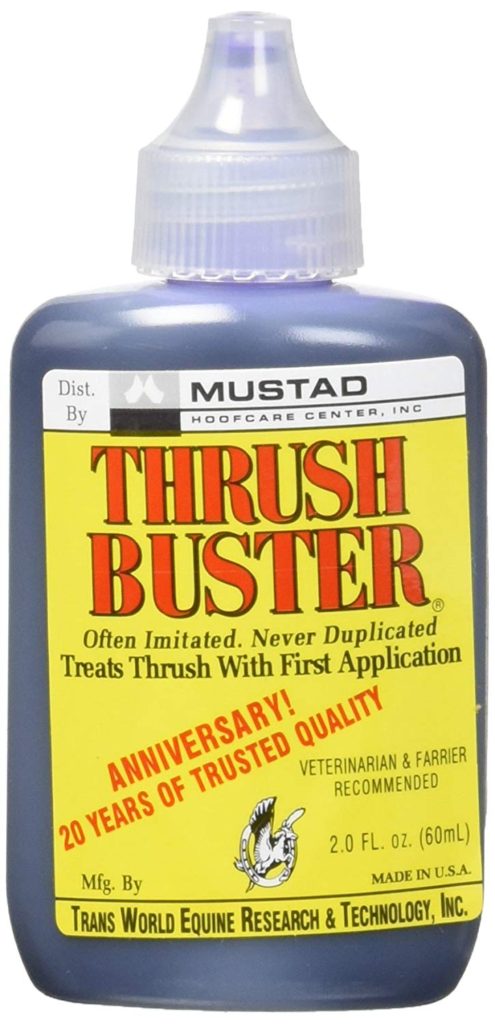
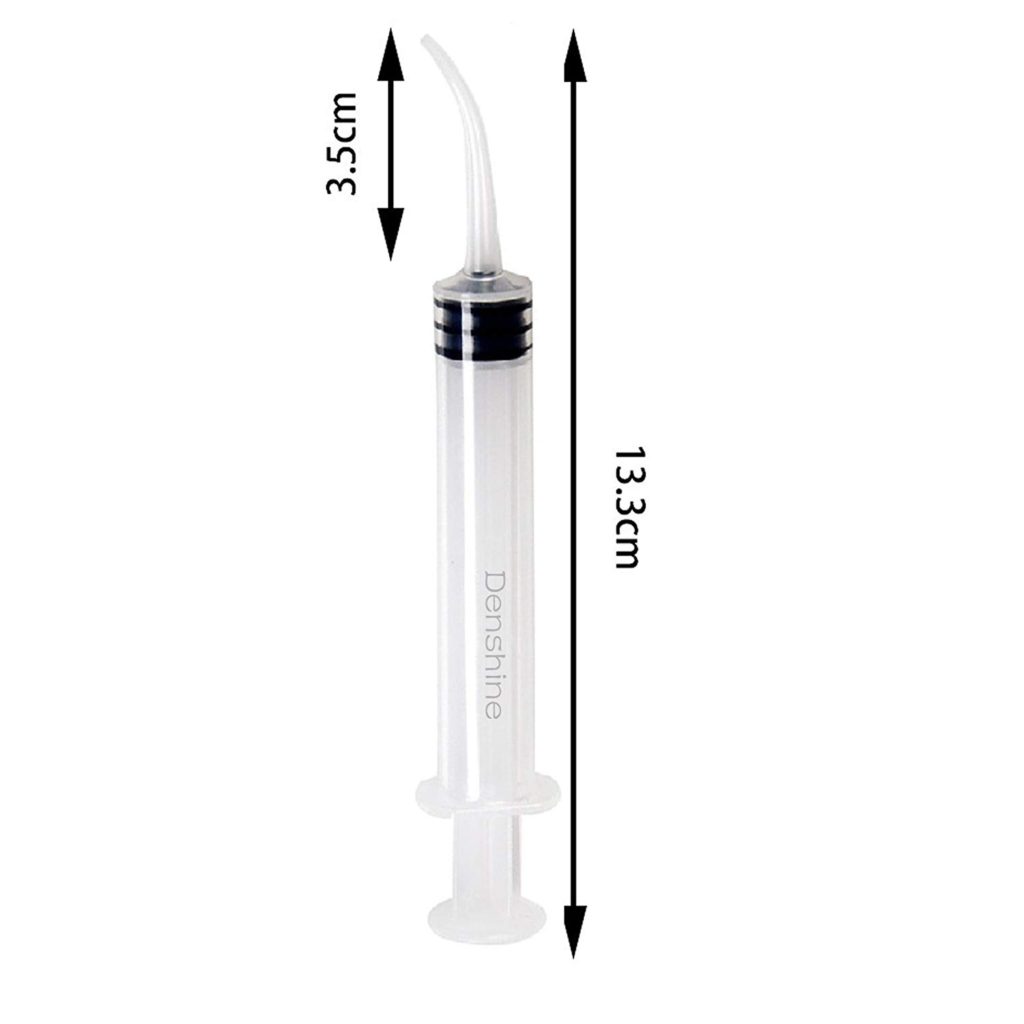

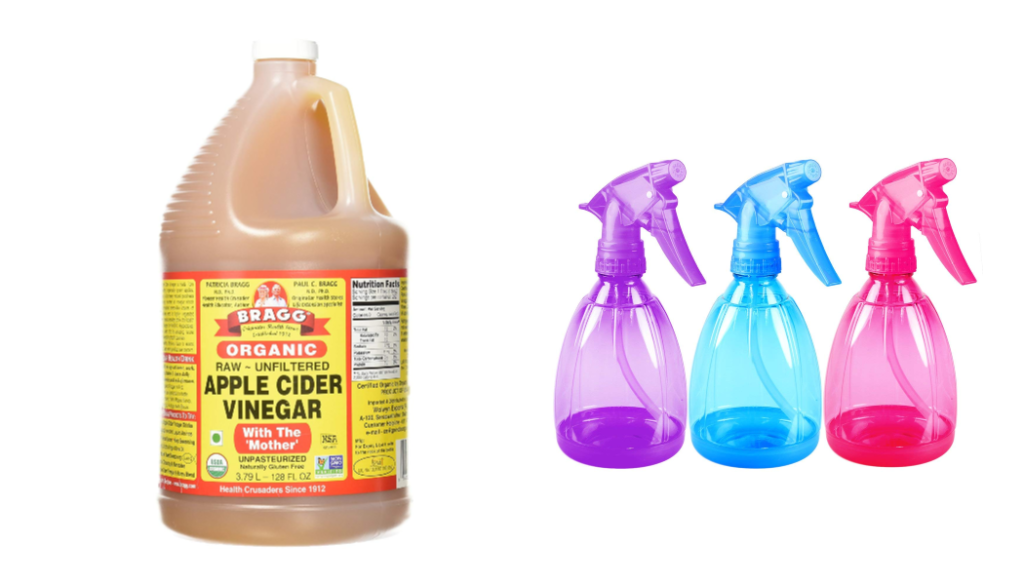
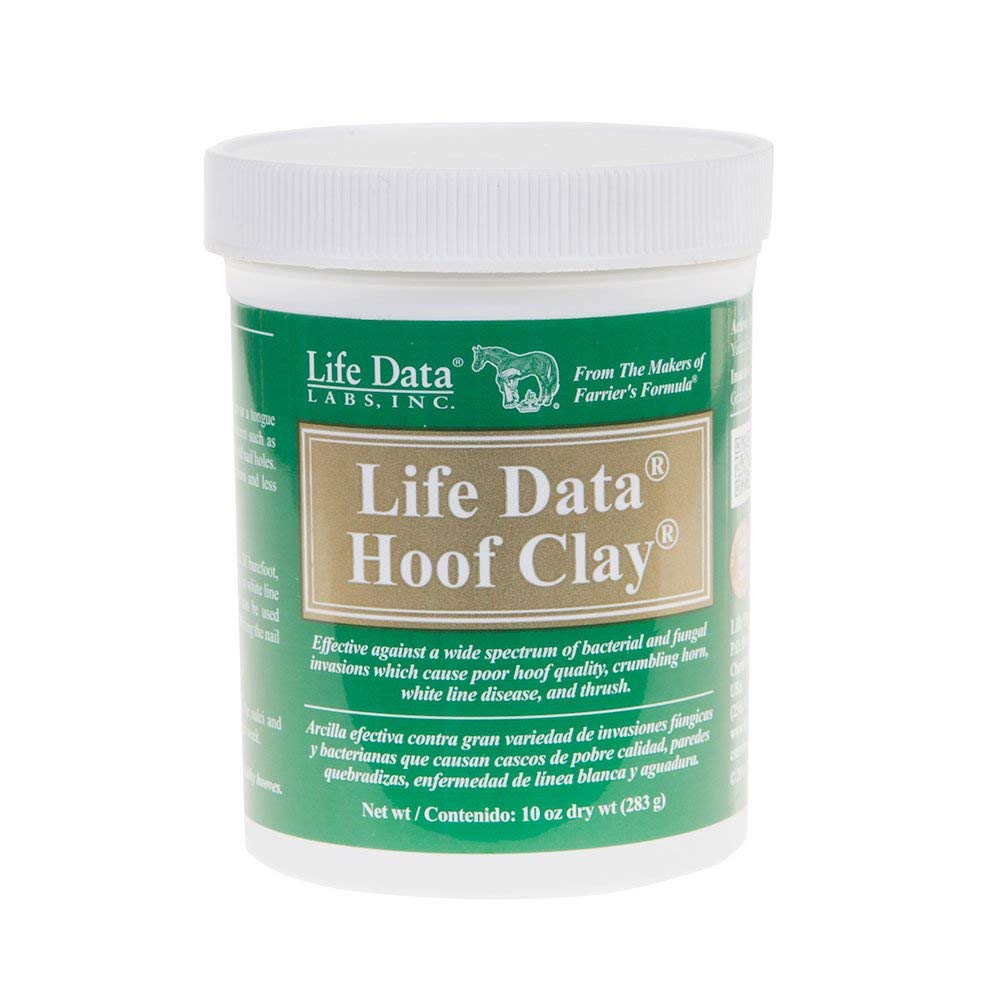
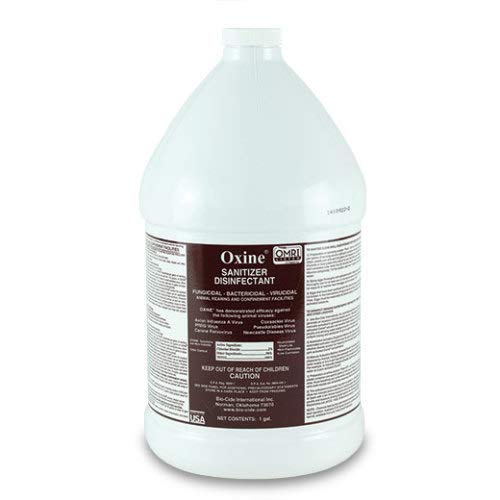
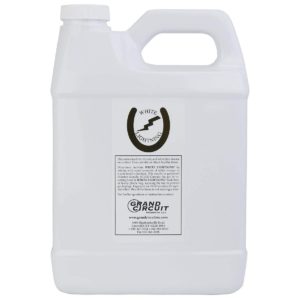
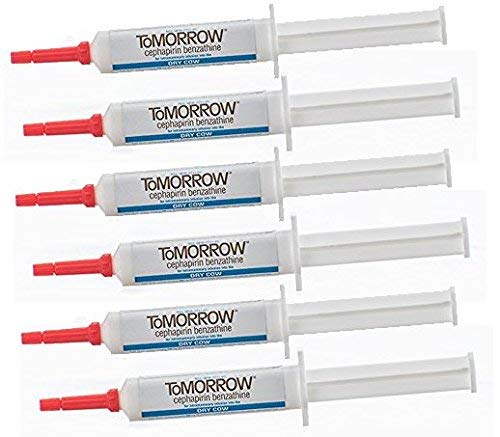
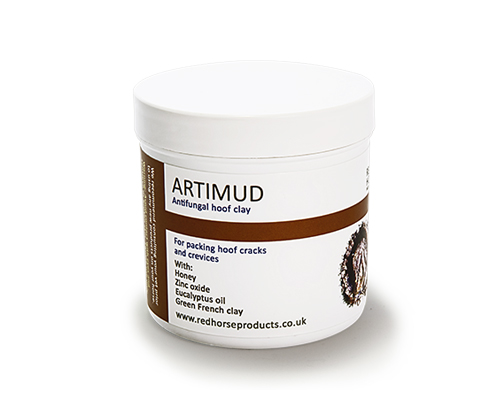
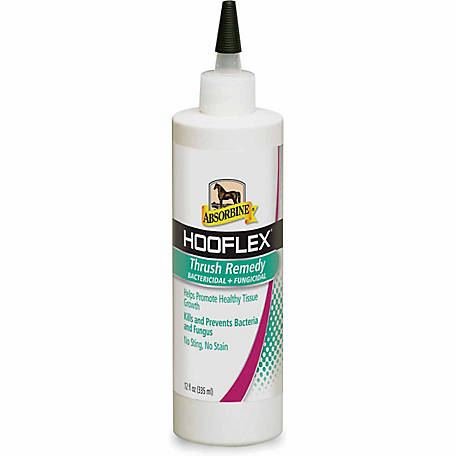
Leave a Reply